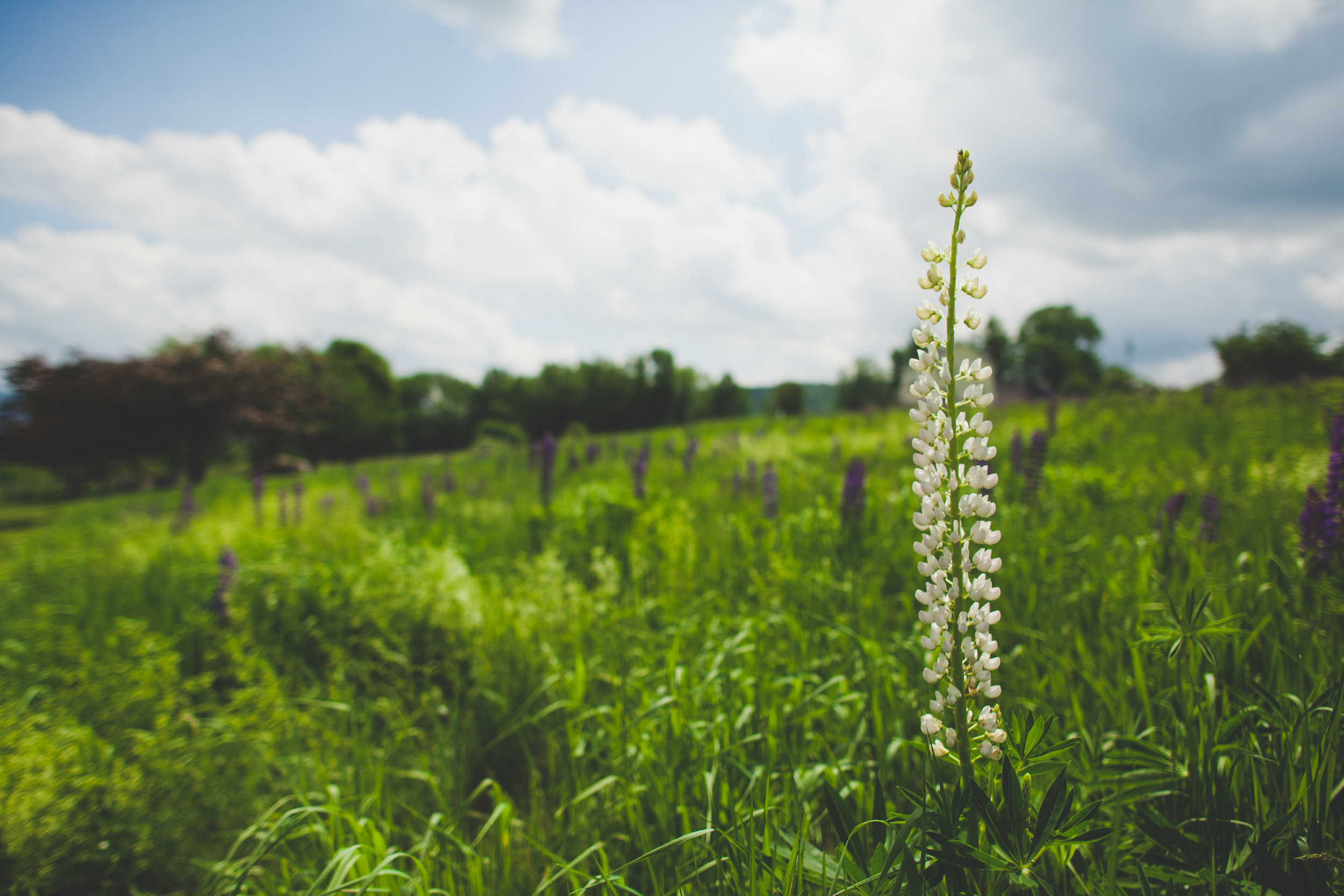How to Chase a Lupine
How to Chase a Lupine
Words by Sarah Cahalan
Photos by Jenn Bakos
“... yet there she stands, bursting with color, burning with defiance.”
- Carolyn Marquis
Driving through New England in those sunny June days that straddle spring and summer, there’s a sight on the roadsides you’re as likely to encounter as lobster shacks on the coast and black flies in the air. Field after field of Lupinus polyphyllus — those tall purple flowers known more commonly as lupines — brighten our landscapes at this time of year, and the good people of New England have built an entire tourism industry around their photogenic blooms.
These spindly wildflowers are well worth chasing after, and you could certainly go the old-fashioned route. B&Bs in prime lupine territory (New Hampshire’s Sugar Hill Inn, for instance) often cook up lodging packages centered on lupine- spotting, and towns around the region offer purple-flower-heavy festivities, from wine and paint nights to full-blown festivals.
But to really make the best of lupine season, you need to chase these beloved blossoms like a local.
To settle in for your petal-peeping, trade the charming country inn for a night under the stars. Franconia Notch State Park in New Hampshire’s White Mountains sits right on the edge of some of the region’s top-notch lupine fields. Pitch a tent and explore your corner of the park for stunning views of all kinds, including a few peppered with those telltale splashes of purple. For a single-day lupine watch, the formula is simple: pick a back road, any back road. The northern reaches of New Hampshire and Vermont and large swaths of downeast Maine are all known for their purple roadside spectacles this time of year, so pick a route where people won’t mind your constant stopping for photo ops, and get Instagramming.
Another classic tenet of lupine tourism is art themed around the stalks. You can probably find some waiting-room-worthy paintings and photos at small-town art fairs around the region, but making your own is even better. Grab some canvases and watercolors, snag a few six-packs of lupine territory craft beer (Woodstock Inn Brewery’s Lemon Blueberry Pale Ale or Maine Beer Company’s Peeper are summery favorites), and make your own DIY boozy painting night. Lupines’ soft purple stalks are easy to recreate at home, even if your artistic skills are more kindergarten art class than Albert Bierstadt.
(If you insist on a ready-made bit of nature art to take home for Mother’s or Father’s Day, try on-trend creatives with pieces devoted to our local animals and plants, like wildlife illustrator Matt Patterson or Dover, NH, based Brainstorm and their range of prints inspired by herbs, leaves, and national parks.)
Wondering how to transplant those violet-hued stunners to your own backyard? The pros’ tip is to keep them contained to your camera roll rather than your garden plot.
You can buy lupine seeds at certain regional plant shops — the Vermont Wildflower Farm is one source — but these flowers are truly wild. They function best when they’re ignored and left to bloom on their own, without the over-attentive hand of a pruning, watering green thumb.
If you absolutely must have a lupine for yourself, we won’t tell if you pluck one from its home and toss it into a vase for a couple of days. Despite their ubiquity in New England and their fame as a regional sightseeing favorite, lupines actually aren’t native to this part of the world. They’re also technically considered invasive — so snipping one is almost like doing that field a favor.
The best thing to do with lupines, though, is to simply appreciate them. Drive north into the mountains or east to the shores of Maine. Stop at that summer-only ice cream stand. Toss a blanket in your trunk or a sketchbook in your daypack and go exploring — and let these purple, flowering majesties come to you.














